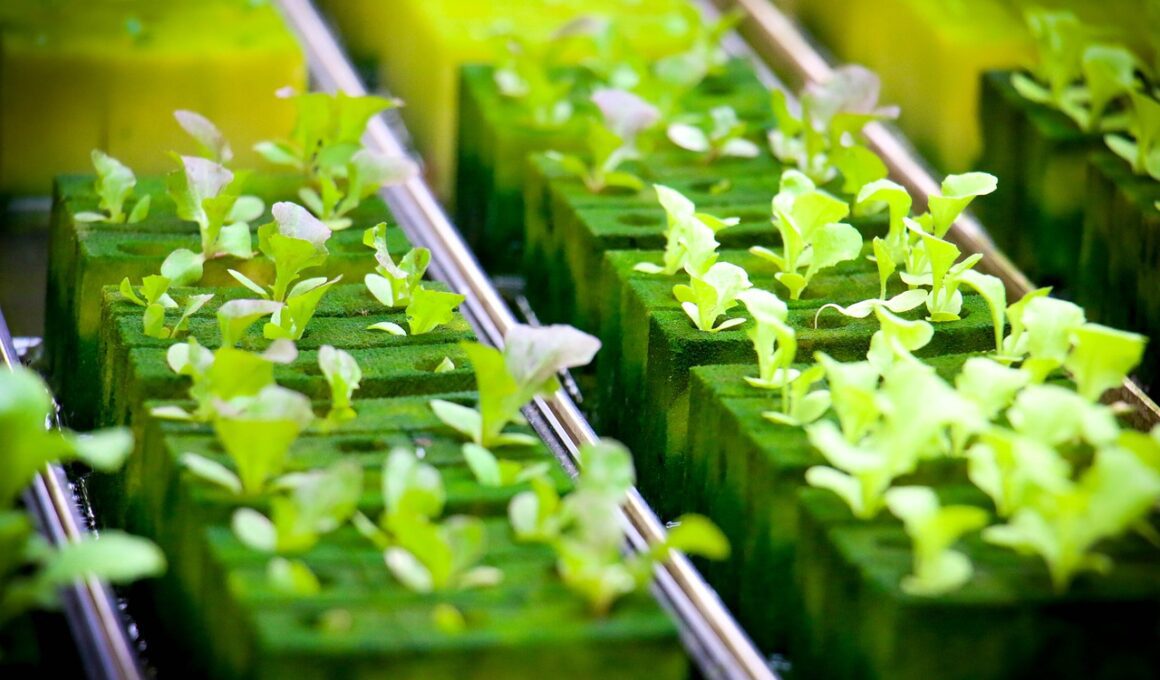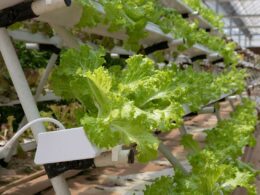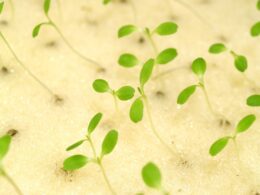Are you looking for a way to grow plants without the hassle of soil, fertilizers, and pesticides? If so, hydroponics might be the solution you’re seeking.
Hydroponics is a method of growing plants in a nutrient-rich water solution, rather than soil. This approach allows you to cultivate plants in a controlled environment, without the need for traditional farming techniques. With hydroponics, you don’t need to worry about using harmful pesticides and herbicides. Instead, you can use natural methods to control pests and diseases.
Additionally, hydroponics doesn’t require large amounts of space, making it an ideal solution for those with limited outdoor areas. And, because water is recycled through the system, hydroponics uses less water than traditional farming methods.
In this article, we’ll explore the many benefits of hydroponics and why it’s becoming an increasingly popular choice for home gardeners and commercial farmers alike.
Soil
You don’t have to worry about soil when it comes to hydroponics. That’s because hydroponics is a soil-less cultivation technique that has numerous advantages over traditional farming techniques. Unlike traditional farming, which relies on soil to provide plants with nutrients and water, hydroponics uses nutrient-rich water instead.
This means that hydroponic plants grow faster, are healthier, and require less water than their soil-based counterparts. One of the biggest advantages of soil-less cultivation is that it allows you to grow plants in areas where soil is not suitable for farming.
This makes hydroponics an ideal solution for urban areas where space is limited and soil is often contaminated. Additionally, because hydroponic plants are grown in a controlled environment, they are less likely to be affected by pests and diseases, which means you can avoid using harmful pesticides and herbicides. When compared to traditional farming techniques, hydroponics is also more efficient and sustainable.
Because hydroponic plants are grown in water, they require less water than soil-based plants. Additionally, hydroponic systems can be designed to reuse water, which further reduces water waste. Hydroponics also requires less space than traditional farming, which means you can grow more food in a smaller area.
So if you’re looking for a safe, efficient, and sustainable way to grow plants, hydroponics is definitely worth considering.
Fertilizers
Fertilizers are a crucial component of hydroponic systems, providing essential nutrients for plant growth without relying on soil. In hydroponics, plants are grown in a nutrient-rich solution that contains all the necessary minerals and nutrients. This allows the plants to absorb the nutrients faster and more efficiently than they would in soil.
One of the advantages of hydroponic fertilizers is that they’re easier to control than traditional fertilizers. With hydroponics, you can easily adjust the nutrient solution to meet the specific needs of your plants. This means you can provide your plants with the exact nutrients they need, resulting in faster growth and higher yields.
However, there are also some disadvantages to using hydroponic fertilizers. One potential issue is that the nutrient solution can become imbalanced, leading to nutrient deficiencies or toxicities. It can also be difficult to find the right balance of nutrients for your plants, which may require some trial and error.
Despite these challenges, many hydroponic growers find that the advantages of using fertilizers in their systems outweigh the disadvantages.
Pesticides and Herbicides
In the world of hydroponic gardening, pesticides and herbicides are often seen as a necessary tool to keep plants healthy and free from pests and diseases. However, did you know that hydroponic systems can actually be designed to not need these chemicals?
There are alternatives to pesticides, such as using organic pest control methods like introducing natural predators or using essential oils. One example of an organic pest control method is using ladybugs or lacewings to eat harmful insects that can damage plants. Another method is using essential oils like peppermint or neem oil, which have natural insecticidal properties.
These methods are not only safer for the plants, but also for the environment and the people who consume the produce. By not using pesticides and herbicides, hydroponic gardeners can also avoid the potential negative effects these chemicals can have on the plants and the environment. Pesticides and herbicides can build up in the soil or water and can harm beneficial insects and animals.
Therefore, it’s important for hydroponic gardeners to explore and implement alternatives to ensure a healthy and sustainable growing system.
What Are the Requirements for Hydroponics?
Hydroponics, a soilless cultivation technique gaining popularity, has its own set of requirements. For successful hydroponic systems, key factors include a suitable container, a stable pH level, proper nutrient solutions, quality lighting, and sufficient airflow. These requirements of hydroponics ensure optimal plant growth and minimize the need for traditional farming methods.
Large Amounts of Space
If you’re limited on space, don’t worry – hydroponic gardening can still work for you with some clever planning. Unlike traditional soil-based gardening, hydroponics doesn’t require large amounts of space. This is because hydroponic systems can be designed to fit into small areas and even vertically. With hydroponics, you can grow more plants in less space than you would with traditional gardening methods.
Alternative growing methods, such as hydroponics, are becoming increasingly popular due to the challenges of urban farming. In cities, space is limited and the soil quality may be poor due to pollution. Hydroponics offers a solution to these problems by allowing plants to grow in a controlled environment. This means that you can grow plants even in areas where traditional gardening is not possible.
Hydroponic systems can also be used to grow plants all year round, regardless of the weather outside. This is a great advantage because it means that you can grow your own food even in the middle of winter when fresh produce is hard to find. Hydroponics is a great way to grow your own food, even if you don’t have a lot of space. With hydroponics, you can grow plants indoors, outdoors, or even on your balcony.
Hydroponics is also a great way to grow plants more efficiently, using less water and fewer nutrients than traditional gardening methods. This means that you can save money on your water bill and on the cost of fertilizers. So, if you’re looking for a way to grow your own food, hydroponics is definitely worth considering.
Excessive Water Usage
If you’re interested in hydroponics, you’ll want to know about recirculating water systems. These systems are designed to recycle water, which means you can reuse the same water over and over again.
This means you won’t need to use as much water as you would with traditional farming methods. It’s better for the environment and your wallet.
Explanation of Recirculating Water Systems
You don’t have to worry about constantly replacing water in a recirculating system, as the water is constantly filtered and reused. This is one of the advantages of using recirculating water systems in hydroponics.
There are different types of hydroponic setups that use recirculating systems, such as deep water culture, nutrient film technique, and drip irrigation.
In a recirculating system, the water is pumped through the growing medium and then back into the reservoir, where it is filtered and treated before being sent back to the plants. This means that the water is constantly reused, reducing water usage and making it a more sustainable option.
Additionally, recirculating systems can be more efficient in delivering nutrients to the plants, as they can be adjusted and monitored more easily.
Overall, recirculating water systems are a great option for hydroponic growers who want to reduce their water usage and improve the efficiency of their setup.
Benefits of Not Needing Excessive Water Usage
Reducing water usage in hydroponic setups through recirculating systems offers a more sustainable and efficient option for growers. Water conservation techniques are becoming increasingly important as water scarcity becomes a global issue.
By using recirculating water systems in hydroponics, growers can minimize their environmental impact and save water resources. Recirculating water systems work by continuously circulating water through the hydroponic setup, which reduces the amount of water needed to grow plants. This not only saves water but also reduces the amount of nutrients that are lost to runoff.
Additionally, recirculating systems can be designed to capture and reuse rainwater, further conserving water resources. By implementing these systems, growers can reduce their environmental impact and create a more sustainable future for the agriculture industry.
Frequently Asked Questions
What are the benefits of hydroponics compared to traditional soil-based gardening?
Looking to start a garden? Consider hydroponics, a method of gardening that has several benefits compared to traditional soil-based gardening.
One of the biggest advantages is that hydroponics doesn’t require soil, making it a great option if you don’t have access to arable land. Additionally, hydroponic gardening uses less water than traditional gardening, making it a more sustainable option.
However, there are also some disadvantages to consider, such as the initial cost of setting up a hydroponic system and the need for more precise monitoring of nutrients and pH levels.
Overall, the comparison between the two methods shows that hydroponics can offer significant benefits for those who are willing to invest the time and money into it.
How does hydroponic farming affect the quality and taste of the produce?
When it comes to hydroponic farming, the quality and taste of the produce can be positively impacted in a number of ways.
Because the plants are grown in a controlled environment, their nutritional value is often higher than traditionally grown produce.
Additionally, the shelf life of hydroponic produce can be longer thanks to the absence of soil-borne diseases.
As far as environmental impact goes, hydroponic farming can be more sustainable than traditional farming methods due to its ability to conserve water and minimize the use of pesticides.
Finally, with an increasing demand for locally grown and sustainable produce, hydroponic farming has become a popular choice for consumers looking to support environmentally friendly agriculture practices.
Can hydroponics be used to grow all types of plants, or are there limitations?
When it comes to hydroponics, there are limitations to what types of plants can be grown. While many plants thrive in hydroponic systems, others may struggle due to their natural growth patterns or nutrient requirements. However, there are alternative methods such as aeroponics and aquaponics that can expand the range of plants that can be grown hydroponically.
It’s important to research and understand the plant limitations and alternative methods before diving into hydroponic farming. With the right knowledge and equipment, hydroponics can be a sustainable and efficient way to grow a variety of plants.
Is hydroponic farming more expensive than traditional farming methods?
If you’re considering hydroponic farming, you might be wondering how it compares to traditional farming methods in terms of cost and yield efficiency.
The truth is that hydroponic farming can be more expensive upfront due to the cost of equipment and materials, but it can also have higher yield efficiency and lower maintenance costs in the long run.
This is because hydroponic farming allows for precise control over the growing conditions, which can lead to faster growth, higher yields, and fewer losses due to pests or disease.
So while hydroponic farming may require a larger initial investment, it can ultimately save you money and provide a more reliable source of food.
How can hydroponics contribute to sustainable agriculture practices?
If you’re looking for a sustainable agriculture practice that can help conserve water, then hydroponics is definitely an option worth exploring. By using vertical farming techniques, hydroponic systems allow you to grow crops using a fraction of the water required by traditional farming methods.
In fact, hydroponics doesn’t need soil at all–it uses a nutrient-rich solution to deliver the necessary nutrients directly to the plants. This method also reduces the need for pesticides and herbicides, which can be harmful to both the environment and human health.
So if you’re interested in taking steps towards a more sustainable future, consider incorporating hydroponics into your agricultural practices.
Conclusion
Congratulations! You now know what hydroponics doesn’t need. By eliminating soil, fertilizers, pesticides, and herbicides, hydroponics provides a clean and efficient way of growing plants.
Not only is it space-saving, but it also uses less water compared to traditional farming methods. With hydroponics, you can grow your own fresh produce in the comfort of your own home or even in urban areas where space is limited.
By using hydroponics, you’re also contributing to a more sustainable and eco-friendly way of farming. So why not give it a try and see the benefits for yourself? Happy growing!









